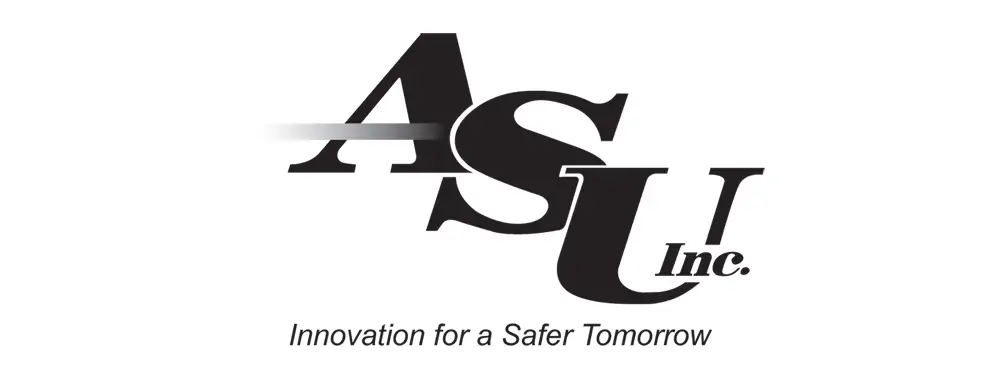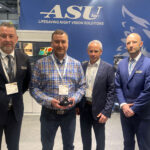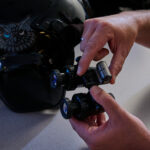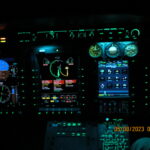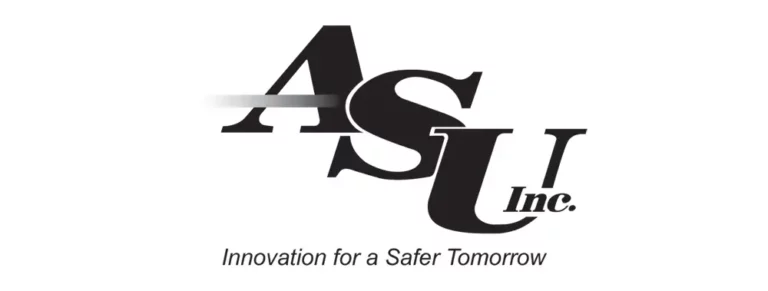Night Vision Tech: The Big Picture
By Frank Lombardi
The benefits of night vision technology to the civil world have finally become tough to dispute, especially in the law enforcement and helicopter EMS roles.
The military began using night vision technology as early as the 1950s. When decreasing size and increasing performance finally put night vision technology in the hands – or actually on the helmets – of military aviators, its impact on enhancing the safety of night flight operations became tough to dispute. Today it has finally become tough to dispute its benefit to the civil world, especially in law enforcement and helicopter EMS missions. But the transition from the military world to civil comes with many caveats. Due diligence by supervisors, program managers, and trainers is paramount to ensure the safe and legal use of night vision technology. If your operation is considering the startup of a goggle program, it’s imperative you invest the time to understand your options and how the technology works as an entire system.
The advancement of night vision technology has been broken down by the military into four generations: Generation 0, 1, 2, and 3. Original 1950s goggle technology, or Gen 0, required an infrared (IR) illumination device to “paint” the objects to be seen. In the early 1960s, Generation 1 was introduced as the first “starlight scopes,” which began using three stacked image intensifiers to amplify existing light. These ultimately proved impractical for aviation usage.
By the end of the 1960s, Generation 2 added a micro-channel plate (MCP), which multiplied and accelerated the number of electrons hitting the photocathode. It also allowed the devices to be made smaller and lighter, thus enabling development of head-mounted versions. Initial versions were full-face, which meant the instrument panel could only be viewed through them, providing a fuzzy, out-of-focus view of the gauges.
Generation 3 became available in the mid 1980s, and added a gallium arsenide (GaAs) photocathode and a film of ions as a barrier onto the MCP. The GaAs featured better sensitivity to IR light, allowing the viewing of objects further away, and the ion barrier increased the life limit of the goggles from 2,000-4,000 hours to over 10,000 hours. Shrinking technology allowed for smaller, lighter tubes and hence the evolution of today’s helmet-mounted goggles. Generation 3, or variations thereof, represent the latest in goggle technology and are what we will concern ourselves with.
Science
(Left) Example of goggle test on aftermarket seller NVGs, showing gain ratio between image tubes in same set of goggles. (Right) View of Class B modified cockpit through Class A goggles. Overly-bright instruments are due to unfiltered light entering goggles
Current goggle technology, despite some variations, basically works like this. Photons of light enter the tube through an objective lens. They strike a photocathode, which absorbs the photons and emits electrons in their place. The electrons then hit a micro-channel plate, where they bounce through more than 10 million tightly packed channels covering a surface the size of a quarter.
Bouncing through the channels causes a cascade of more electrons to be emitted, amplifying the original signal. The multiplied electrons then strike a phosphor screen (similar to a television), turning them back into photons of light that give you a greatly enhanced view of the night through a focusable eyepiece. Aviator night vision goggles (NVGs) provide a 1:1 magnification to allow for proper depth perception. It is important to realize that you are looking at the goggle image projected on the phosphor screen, not actually through the goggles.
When researching night vision equipment, it’s easy to be overwhelmed by the sheer number of acronyms and model designations alone. Any form of night vision technology, whether a goggle, scope, or otherwise, can be considered a night vision device, or “NVD.” When the military developed the first NVG model exclusive to aviators, they referred to it as ANVIS (Aviation Night Vision System) model AN/AVS-6 and subsequently AN/AVS-9. You may see those same models referred to as the ANVIS-6 or ANVIS-9, dropping the military designation for short. These two models have since been given commercially manufactured names. The AN/AVS-6 commercial equivalent is designated the F4212 series by manufacturer ITT Exelis, and its AN/AVS-9 is designated the F4949 series. However, an AN/AVS-9 model goggle manufactured by L-3 EOS will have the designation M949. Clear as mud, right?
The many different model designations for the same goggle add to the confusion when aftermarket sellers of the technology use similar nomenclature to promote sales. This is concerning, especially when many agencies look for the lowest bidder when purchasing equipment.
Essentially, the world has only two OEMs of true Gen 3 image intensifier technology – ITT Exelis and L-3 Electro-Optical Systems. These two companies are both contracted by the U.S. military as NVD suppliers. But there are many versions of their Gen 3 intensifier tubes, built to different specs for different purposes, that are now also available to the civilian market. Additionally, the Mil-Spec design of the housing and mounts for the ANVIS-6 and ANVIS-9 system is readily available for copy. This allows them to be manufactured by non-OEM aftermarket companies with materials of potentially lesser quality. So while the essential “guts” of the goggles might contain the key parts to enable sale as a model AN/AVS-6 or AN/AVS-9, they may only incorporate some, but not all, OEM parts or manufacturing.
Example of prior military housing crossbeam sanded down to remove military issue markings.
A key example of this would be when a company buys Gen 3 tubes from an OEM, installs them into an aftermarket housing, and pairs them with objective lenses and eyepieces containing inferior optics, in an effort to reduce cost. The buyer tends to concentrate on the type of image intensifier used, not realizing that the system as a whole may be of lesser quality. Another example would be when a Gen 3 image intensifier intended for ground troops, is used inside a set of goggles and sold as suitable for aviation. True aviation-grade image intensifiers are housed in a metal casing to shield from electro-magnetic interference. Tubes intended for ground use do not have that requirement. Additionally, there are a few foreign companies that produce Gen 2 or slightly better Gen 2+ tubes for use in housings that may still be called model AN/AVS-6 or AN/AVS-9.
So how do you purchase with confidence? If you want assurance that your NVGs will be within the advertised military specification, then purchase them through either ITT Exelis or L-3 directly, or through one of the authorized distributors. This ensures the entire system is built with certified parts and tested with accepted methods and certified equipment. Purchasing from any company that does not have military or FAA oversight of their quality may be asking for trouble if you fly Part 91 or Part 135.
Example of foreign-made Photonis image intensifier, came out of NVG sold as “Aviation Grade,” but is only Gen 2. Images courtesy of Night Flight Concepts, from the “Demystifying NVGs Webinar Series”
Example of prior military housing crossbeam sanded down to remove military issue markings.
Realize that buying directly through the OEM can prove more costly than going through a distributor, since the distributor tends to buy in bulk, and can give a more competitive price for smaller orders. Bill Koshansky, regional sales and night vision program manager for Transaero advised that if you want to be sure you are getting an authentic set of goggles, ask for the “Test-A Data Record,” which shows the results of all the post-production tests done on your set, verifying they meet specifications. Transaero is the master distributor of the ITT Exelis F4949 aviator night vision goggle.
Do not forget that NVGs are only one part of the ANVIS system. The other part, and arguably the part that will determine what type of goggles you can purchase, is the modification to the cockpit and exterior lighting that will be necessary for safe legal use of your night vision system.
The goggles are highly sensitive to the smallest amount of light energy, especially in the 600-900 nanometer (nm) wavelength range. The white light emitted from normal cockpit lighting will cause them to automatically “gain down” in order to protect themselves from damage, and to maintain a steady level of brightness and contrast. But by doing this, they become less sensitive to the natural-lit scene outside, degrading the crew’s visual acuity. To stop this from happening, cockpit lighting must be filtered so that the light emitted does not affect goggle performance.
There are generally two classes of NVIS aircraft lighting modifications: NVIS Class A or NVIS Class B. Aircraft modified to Class A will allow the passage of light up to 625 nm. This allows the use of blue, green, and yellow lighting. Aircraft modified to Class B will allow the passage of light up to 665 nm. This allows for the viewing of cockpit displays that also contain some red lighting as part of their symbology.
Having the aircraft lighting modified to either Class A or Class B will require the objective lens on your goggles to have the appropriate Class A or Class B filter (There is also a Class C, for goggles that use a heads-up display). The appropriate goggle filter will block the same wavelength of light that your cockpit mod will allow. This lets the crew look under the goggles and view the instrumentation with the naked eye, but does not allow that light to enter the tube and de-sensitize the goggles. Matching your goggle filters to your cockpit filters is paramount. If a cockpit that is modified to Class B (allowing some red) is viewed with goggles that have Class A filtering (which block only up to some yellow), there exists a gap that will allow light from between 625 to 665 nm to enter the goggles and cause them to gain down, lessening their effectiveness.
Rather than getting wrapped up in specs and all the confusing technical jargon, there are three main areas that define a goggle’s performance. They are: photosensitivity, resolution, and signal-to-noise (SNR). In all cases, higher is better. As an overall indicator of performance, the resolution is multiplied by the SNR, to give you a figure of merit (FOM). Since some of our very best goggle technology is still proprietary and can pose a risk to National Security, it is the FOM that dictates a goggle’s exportability to foreign countries under the ITAR.
When all the smoke clears, your choice of aviator goggle permitted for use in the U.S. National Airspace System will be limited to select forms of model AN/AVS-9, marketed as the ITT Exelis F4949, and the L-3 M949. Rotorcraft pilots may also choose the AN/AVS-6, which will most likely have Class A objective lenses, but generally are not compatible with fixed-wing helmets, and will probably no longer be found commercially.
While not really changing their outward appearance, different goggle options can definitely alter their performance and significantly alter their price. As far as today’s Generation 3 technology goes, both ITT Exelis and L-3 produce standard filmed tubes that are virtually indistinguishable in performance. Occasionally you may see or hear reference to Generation 4 technology being used inside a set of goggles. The use of “Gen 4” nomenclature is actually incorrect, in that the U.S. military has not yet officially adopted this term. However, in efforts to push goggle science to the limit, OEMs have already developed ways to improve upon the standard Gen 3 filmed tube. Examples of the very best in image intensifier technology involve the thinning of, or even removal of the ion film barrier. As electrons hit the MCP and multiply, some bounce back and strike the photocathode, which damage it and speed up its lifecycle. The ion film barrier controls this, but at the cost of limiting goggle performance.
ITT Exelis has developed a thin-filmed tube, which increases the overall performance, reduces halos, and uses a “gated” power supply to maintain or actually improve tube life limit. Gating, or quickly turning the power on and off controls the amount of stray electrons hitting the photocathode. ITT Exelis refers to this tube as their top of the line, “Gen 3 Pinnacle.”
L-3 produces an unfilmed, gated version that competes with the ITT model, which they call the “Infinity.” According to Joseph Estrera, vice president and chief technology officer of New Product Development at Aviation Specialties Unlimited, it’s estimated that the L-3 unfilmed tube has a 30 percent increase in performance and double the life-limit when compared to a standard Gen 3 tube. ASU is the master distributor for L-3 Warrior Systems and the model M949 goggle.
You should now be armed with some background and a bit of night vision goggle science, giving you the big picture of what it takes to see into the darkness.


